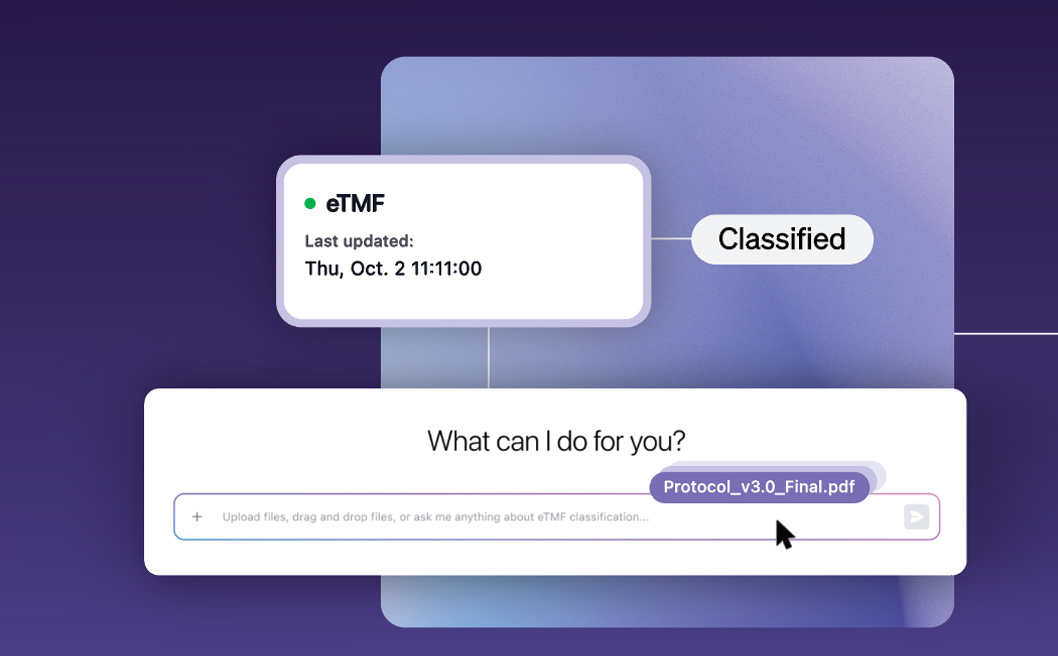The following blog is based on a panel held during the 42nd annual J.P. Morgan Health Conference occurred at the Westin St. Francis Hotel in San Francisco. The panel featured Michael Brooks, COO, Syneos, Rohan Ganesh, Partner, Obvious Ventures, Cathy Gao, Partner, Sapphire Ventures, Mike Rea, CEO, IDEA Pharma, Sunny Kumar, Partner, GSR and Michelle Longmire, CEO and co-founder of Medable.
In June of 2022, Open AI forever changed the world’s technological landscape with the release of ChatGPT 3.5. The explosion and proliferation of AI tools have become a focal point of interest and curiosity in almost every industry, with commentators in pharma wondering how AI can improve clinical research.
In January 2024, panelists from Syneos, Obvious Ventures, Sapphire Ventures, IDEA Pharma, and GSR Ventures joined Medable’s CEO, Dr. Michelle Longmire, to discuss the purpose, potential, and power this transformative technology offers.
Here’s what they had to say.
AI’s true purpose in pharma
Panelists agreed that the ultimate goal of using artificial intelligence in clinical research is to bring new and effective therapies to patients faster than ever before.
This can be accomplished by placing AI into areas where humans have traditionally struggled or slowed down the research process but also extends into areas like optimizing trial design and management. By leveraging historical clinical trial data, algorithms can identify areas for protocol optimization, including appropriate endpoint selection, sample sizes, and study durations. The result is more efficient and informative trials, reducing costs, expediting timelines, and ultimately increasing the likelihood of successful outcomes.
How is AI being used by pharma today?
Panelists noted that AI is being used primarily in research in three key ways today. The first is in replacing humans in any processes that are seen as “high-volume, repeatable processes.” These are tasks like creating case report forms (CRFs) and building databases. Traditionally, data managers manually generate numerous CRFs for data collection, which can be time-consuming and prone to errors. AI and ML significantly accelerate the process as the technology reads the clinical trial protocol and automatically generates eCRFs and matrices.
The second is by moving people away from creation and more to editing. What’s meant here is that in some early cases, pharma companies are using machine learning and AI to generate the first drafts of protocols, then bringing in people to refine those data-driven protocol drafts.
Lastly, utilizing AI’s great capabilities in analyzing large volumes of data. Here, AI analysis is used to find patterns, trends, and any other information that users choose to investigate.
Responsible use of AI in clinical research
The panelists noted that currently there are two major risks associated with AI in drug development. One is the technological preparedness of the people themselves who are working with artificial intelligence. With AI being new, many in the industry are unfamiliar with the best ways to work with the technology. For instance, Michael Brooks, COO of Syneos poses the question, “Do they know how to query the environment? Do they know how to interpret the data that's coming back? And really bring critical thinking of ‘what is this telling me’?”
The second is the quality of the data we are feeding the AI itself. While AI has the potential to transform countless industries, it’s highly dependent on being fed “good data.” Brooks notes, “bad data can lead to bad decisions, which leads to even more bad data…” He encourages researchers to evaluate the source data being used and consider biases.
How companies can see the impact of AI
When it comes to how companies can find success with AI, the panelists highlighted a few key factors.
The panelist's first consideration is all around talent and the purpose of the company. Here, success comes not from having the best technology or ideas but from attracting and retaining a small but critical group of individuals capable of developing cutting-edge AI applications. In other words, staff and hiring are key.
Cathy Gao of Sapphire Ventures sites a company’s “ability to attract a pretty small group of people capable of building really cutting edge applications around AI and the ability to attract and retain those people”
The second big consideration around success involves an organization’s ability to create a good user experience. Panelists noted the very recent example of InVision and Figma to illustrate how a focus on user experience can significantly impact a company’s success. Despite having no technical advantage over InVision, Figma's emphasis on user experience allowed it to surpass its competitors and become a dominant force in the industry.
What diseases are the best fit for AI’s strengths?
Panelists noted two major diseases that would be a good fit for artificial intelligence’s current strengths.
Alzheimer's disease was highlighted for its complexity and the potential for AI to address it by understanding the patient journey and segmentation better, while cancer was highlighted because of its many tumor types and the need for raw computing power to make significant progress.
Both diseases involve a vast amount of complex data, including genetic information, brain scans (in Alzheimer's) or imaging scans (in cancer), and patient medical history. AI excels at analyzing these large datasets to identify patterns and relationships that humans might miss.
For example, in Alzheimer's AI can analyze brain scans to identify early signs of the disease before symptoms appear. This could allow for earlier intervention and potentially slow the progression of the disease.
With cancer, AI can be used to analyze genetic mutations and other factors to identify the best course of treatment for each individual patient, a key concept in precision medicine.
“The reality is, there are hundreds of tumor types, and when you subset them, there are thousands, right? We're never going to cure cancer without AI, machine learning, and quantum computing.” - Mike Rea, CEO IDEA Pharma
Lastly, panelists also noted excitement about AI to help break through in areas of focus that are currently underserved, such as women’s health and aging. In each of these areas, the industry still needs to “unveil the mysteries” around them (such as with PCOS and infertility). It’s here where panelists hoped AI could further the understanding of these fields.
Closing panelist thoughts
In closing, the explosion and proliferation of AI have only just begun to impact drug development. Thankfully, AI’s future seems bright, with panelists highlighting its potential for breakthroughs in key areas like oncology trials, research speed, and data analysis. For those wishing to explore AI in research, it’s important to remember that a proper foundation for AI begins with good practices, staffed by people who are committed to ethical outcomes. Or, in other words, bad inputs will only yield bad outputs.










